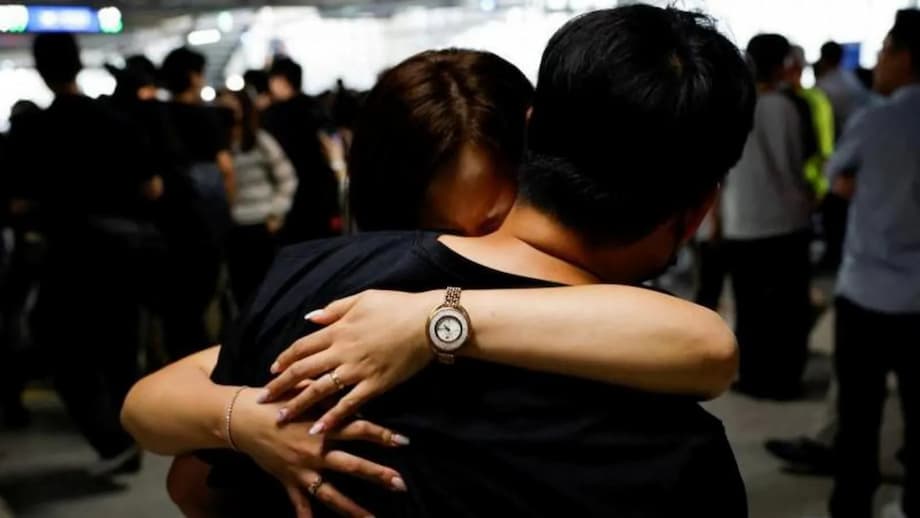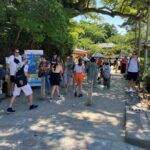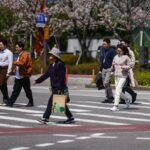Alliance under strain as workers return home and Seoul opens rights probe
South Korea has launched an investigation into potential human rights violations during a United States immigration raid that swept up hundreds of Korean nationals at a factory site in Georgia. The episode, which culminated in more than 300 South Koreans flying home after a week in custody, has tested a cornerstone alliance just as Seoul’s companies ramp up multibillion dollar projects in American manufacturing. Images of workers in handcuffs and ankle chains ignited anger across South Korea and prompted urgent diplomatic outreach to Washington.
- Alliance under strain as workers return home and Seoul opens rights probe
- What happened at the Georgia plant
- Why these skilled workers were in the United States
- Seoul’s demands and Washington’s response
- Impact on Hyundai, LG and U.S. manufacturing plans
- Public anger and political fallout in South Korea
- Legal and human rights questions raised by the raid
- What comes next
- Highlights
Seoul’s presidential office said it conveyed strong regret to the United States and demanded that the rights and interests of its citizens be protected during law enforcement actions. Officials pledged a thorough review with the companies involved to identify any mistreatment and to prevent a repeat. In parallel, senior South Korean and U.S. officials have been discussing practical fixes to a long running problem at the heart of the crisis, the lack of a clear visa path for short term, highly skilled technicians who assemble and launch new production lines.
The detained Koreans, many of them engineers and mechanics working for Hyundai, LG Energy Solution and subcontractors at a battery plant site near Savannah, arrived at Incheon International Airport to emotional reunions. They said the week in detention was shocking and confusing. Some workers from other countries remain in U.S. custody. The timing of the raid, amid sensitive trade talks and a large South Korean investment pledge, has raised concerns in Seoul’s business circles and within the government.
What happened at the Georgia plant
On 4 September, U.S. immigration officers carried out a coordinated workplace operation at a Hyundai and LG Energy Solution battery factory construction site in Ellabell, Georgia, west of Savannah. The operation involved Immigration and Customs Enforcement (ICE), and according to returning workers it also included agents from the Federal Bureau of Investigation and the Justice Department’s Bureau of Alcohol, Tobacco, Firearms and Explosives. Officials detained 475 people at the site, the majority of them South Korean nationals. U.S. authorities said many had overstayed visas, entered without proper authorization, or lacked permission to work in the country.
Video released by U.S. authorities and widely broadcast in South Korea showed detainees led away in handcuffs and chains. The images struck a nerve in a country that is a major American investor and security ally. U.S. officials have described the action as a significant enforcement operation tied to a broader crackdown on illegal work and visa misuse in 2025, insisting that immigration laws apply equally to all nationalities.
Accounts from the site
Returning workers described confusion as agents swept the construction area and separated employees by immigration status. One LG Energy Solution engineer said what began as routine questioning quickly felt like a criminal roundup.
LG Energy Solution engineer Choi Young Hee said: “It started to look serious when they started putting handcuffs and shackles.”
Others said the experience left them wary of returning to the United States for future projects, even if invited back to train local staff.
Jang Young Seon, an engineer for a subcontractor, said: “Nobody is going to stay and work when it’s like this.”
Inside detention
Many detainees were processed at an ICE facility in Folkston, southeastern Georgia. Workers described long hours of waiting, crowded rooms and basic conditions. South Korean officials asked media to protect the privacy of returnees and urged civility in public discourse about the case.
One worker said sharing a small room was difficult, with “the toilet next to where we ate and slept.”
At Incheon, some arrivals shouted with relief. One call of “I’m back! I’m free!” captured the mood of many who stepped into the terminal to embrace family members after a week of uncertainty.
Why these skilled workers were in the United States
South Korean manufacturers have poured capital into U.S. vehicle, battery and chip projects, often on tight construction schedules. To meet those deadlines, companies rely on technicians from Korea to install specialized equipment and calibrate production lines. These workers are typically needed for weeks or a few months, then rotate to the next launch site. U.S. immigration law, however, offers no straightforward visa for short stays of hands-on technical work that is not long term employment.
Many of the detained Koreans arrived on the Visa Waiver Program (ESTA) or on B-1 business visitor visas. Both are intended for travel that includes meetings, training and similar business activities. Neither authorizes routine physical labor. There is a narrow allowance under the B-1 category for installing or servicing equipment bought from a foreign supplier, but the line between permitted setup tasks and unauthorized work can be difficult to parse on complex factory projects.
The grey area between visiting and working
Korean companies and their contractors say they have long navigated a grey zone, one in which supervisors plan for business visitors to oversee installation while local crews do most physical work. In practice, technicians often end up doing hands-on adjustments to keep a build on schedule. Firms argue that inconsistent enforcement adds to the risk, since practices accepted at one site may draw a raid at another.
Other visa routes, like H-1B specialty occupation visas or L-1 intracompany transfer visas, are slow, capped or ill suited to short deployments for dozens or hundreds of technicians at once. That is why Seoul has pressed for a dedicated visa or a tailored program for investment related projects. South Korea’s foreign minister said both governments are forming a working group to craft clearer rules and, if needed, a new visa pathway so that skilled teams can travel lawfully and predictably for factory launches.
Seoul’s demands and Washington’s response
The presidential office in Seoul said it had conveyed strong regret and asked Washington to ensure that the rights and interests of South Korean citizens are not infringed during law enforcement proceedings. The government also said it would coordinate with companies involved to document any abusive conduct and support a full investigation into possible rights violations. Senior officials stressed that protecting the dignity and safety of South Korean workers abroad is a core duty of the state.
U.S. diplomats engaged quickly. South Korea’s foreign ministry said the U.S. Deputy Secretary of State expressed regret over the incident in meetings in Seoul and proposed using the crisis as a chance to improve visa processes for technicians tied to major investments. Officials discussed creating a new visa category or issuing clear guidance for existing visas, as well as assurances that Koreans would not face disadvantages if they re enter the United States to complete unfinished work.
President Donald Trump personally weighed in as the repatriation was being arranged. South Korean officials said he temporarily paused the departure to explore whether some workers wanted to remain to help train American employees. According to Seoul’s foreign minister, Trump also pushed for a less punitive outcome.
South Korea’s foreign minister said President Trump told U.S. officials: “This is not right,” and asked whether there could be a different ending to the case.
Impact on Hyundai, LG and U.S. manufacturing plans
The Georgia battery factory at the center of the raid is part of a larger Hyundai complex near Savannah that is central to the country’s electric vehicle strategy. Executives said the operation would now face a delay of roughly two to three months. The need to find replacement workers and reset schedules will ripple across contractors already stretched by a tight labor market in specialized industrial construction.
For the United States, these projects are tied to goals of building domestic supply chains for electric vehicles and energy storage. Politically, the stakes are high. Washington has welcomed foreign capital, including a major investment package from South Korea, to revive American manufacturing and support jobs in the Southeast and Midwest. Korean technicians, who know the equipment and can bring a line from installation to stable output, are often the link between a new plant and a product rolling off the line.
LG Energy Solution’s leadership struck a cautious note, saying disruptions were within a manageable range and that the company intended to keep the launch moving. Even so, the disruption underscores how critical clear rules and consistent immigration practices are to meeting public targets for factory openings.
Public anger and political fallout in South Korea
Television footage of Korean nationals in shackles triggered broad outrage across South Korea. Protesters gathered near the U.S. Embassy in Seoul. Some held banners mocking the U.S. president and accusing Washington of courting investment while criminalizing the workers who helped build those factories. The perception of disrespect toward a key ally resonated across political lines, amplifying scrutiny of the alliance.
Public surveys reported a clear majority disapproved of the raid, and politicians warned that a repeat could hurt the business climate. Senior figures close to President Lee Jae Myung said companies would hesitate to send technicians without predictable visas and fair treatment at worksites. The government urged calm while insisting on concrete solutions from Washington.
Labor groups demanded accountability and an apology from the U.S. administration, calling the use of chains and the conditions described by detainees unacceptable.
The Korean Confederation of Trade Unions said the incident was “a clear violation of human rights” and urged the government to consider stronger measures if workers’ safety cannot be guaranteed.
Korean firms, wary of further disruptions, have begun reviewing travel plans and staffing rotations for U.S. projects. Business leaders repeatedly called for a transparent, reliable visa framework that fits the reality of short technical deployments needed to stand up complex production lines.
Legal and human rights questions raised by the raid
ICE conducts worksite operations to target unauthorized employment, visa fraud and related offenses. Such actions can include search warrants, on site interviews and detention for processing. The presence of agents from other federal units points to a broad enforcement footprint at the Georgia site. U.S. authorities say the use of restraints during transport is a standard safety protocol. In this case, images of handcuffs and ankle chains were viewed in South Korea as degrading, and they became the focal point of the public debate.
Seoul’s human rights probe is expected to assess whether detainees had timely access to legal counsel and consular assistance, whether medical needs were met, and whether the use of restraints and the conditions in holding facilities met legal and humanitarian standards. Some workers described cramped or unclean conditions at processing centers. South Korean officials have also pressed U.S. counterparts about the treatment of non Korean detainees who remained in custody after the charter flight left, reflecting concern for fair process regardless of nationality.
What comes next
Seoul and Washington have set up a working group to craft practical fixes. Options on the table include a tailored visa route for short term technical teams tied to major factory launches, official guidance clarifying what duties are allowed under B-1 business travel, and advance verification procedures for large investment projects. South Korean officials said the United States agreed that workers could return later to finish their assignments without penalty, provided travel complies with clarified rules.
The episode unfolded as both governments negotiate a larger economic package that includes a significant South Korean investment commitment and lower U.S. tariffs. That context raised the political temperature but also created pressure to find solutions. The two allies say they want to protect both lawful immigration enforcement and the skilled collaboration that keeps new plants on schedule. Achieving both will require clear rules that companies can follow and enforcement that does not undermine the very projects Washington has sought to attract.
Highlights
- South Korea opened a human rights investigation after a U.S. immigration raid detained hundreds of Korean nationals at a Hyundai and LG Energy Solution battery plant site in Georgia.
- More than 300 Korean workers returned home after about a week in U.S. custody, arriving to emotional scenes at Incheon International Airport.
- U.S. authorities said many detainees had overstayed visas or lacked authorization to work, and cited immigration law enforcement as the basis for the operation.
- Images of workers in handcuffs and ankle chains sparked outrage in South Korea and strained a key alliance.
- Seoul conveyed strong regret to Washington and demanded protection of its citizens’ rights during U.S. law enforcement actions.
- Both governments are discussing a new visa pathway or clear guidance for short term technicians tied to large investment projects.
- Hyundai said the Georgia factory launch would be delayed by roughly two to three months because of the disruption.
- Some foreign workers from other countries remained in ICE detention after the Korean charter flight departed.
- South Korea’s foreign minister said President Trump intervened, calling for a different outcome and pausing repatriation to consider training options.
- Public protests and labor groups in South Korea condemned the treatment of workers and urged stronger safeguards for future deployments.




